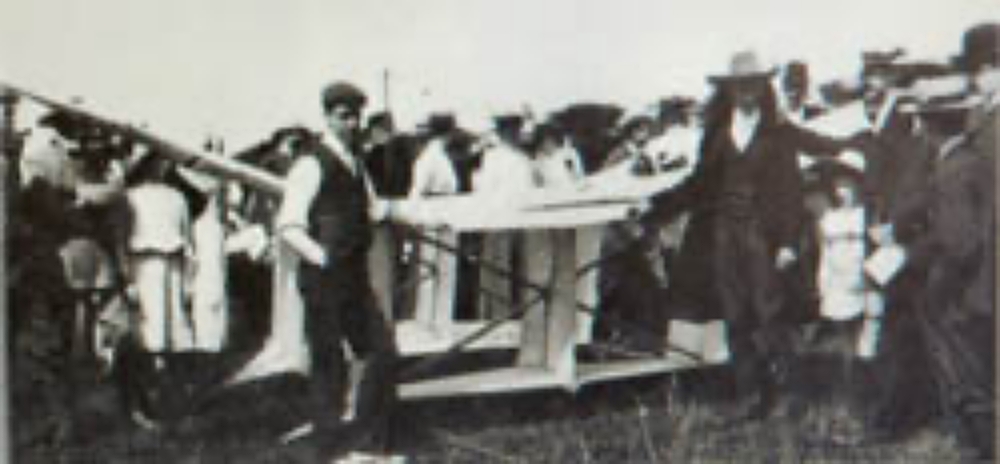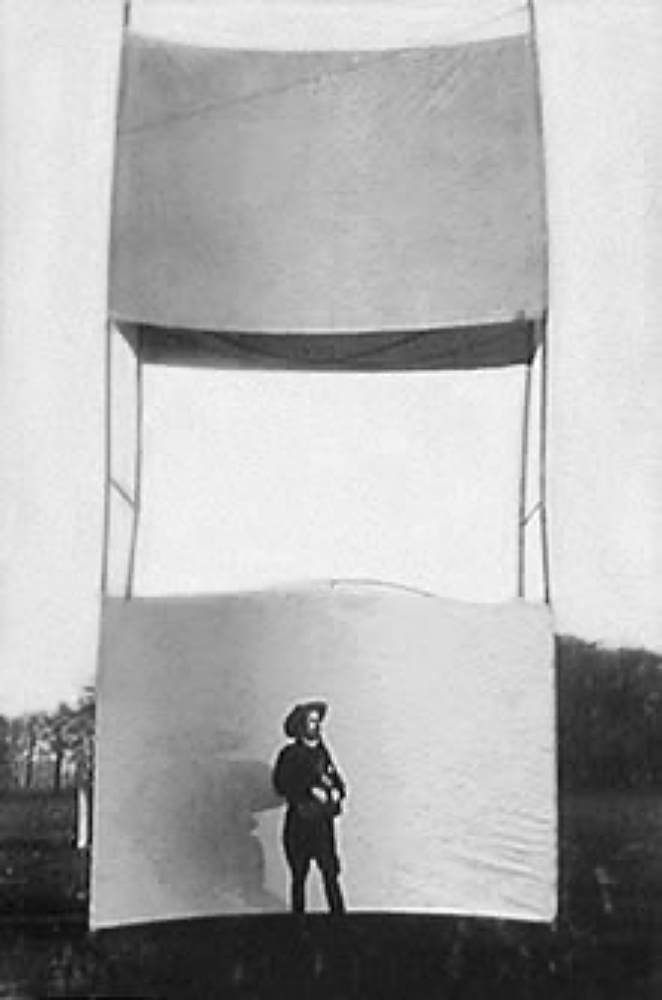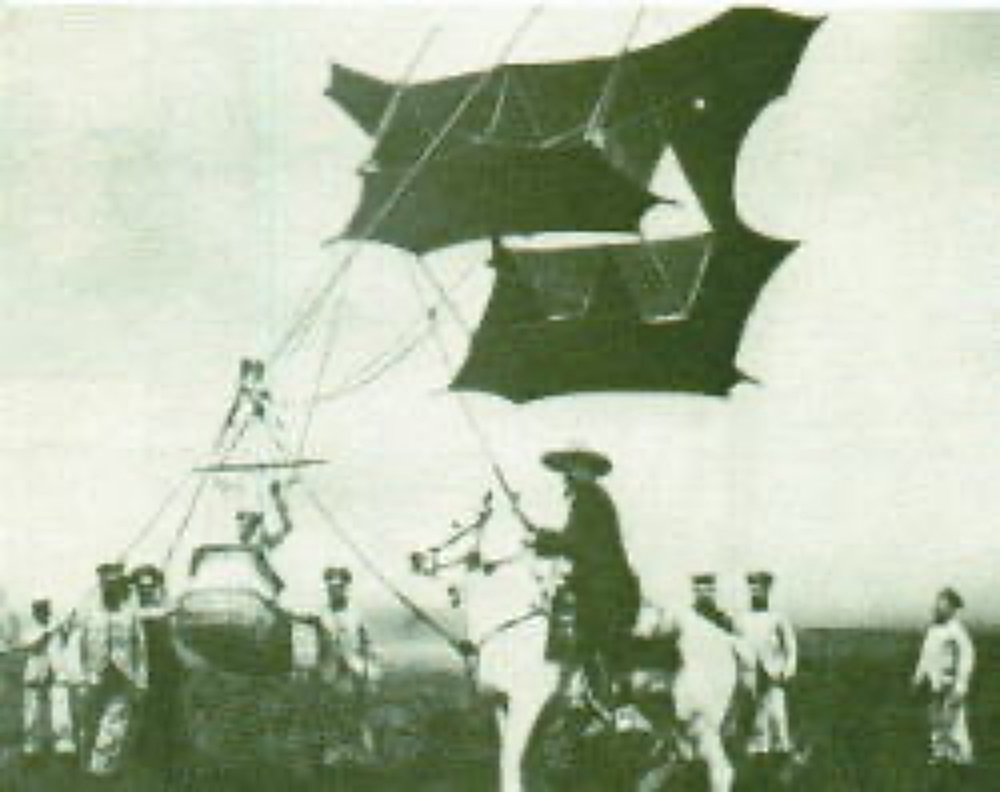Colonel Cody flies into Worthing
KITES are an immensely popular way of powering thrill-seeking surfers across the waves at astonishing speeds and, during the past summer, hundreds of top surfers from all over Britain – and many from abroad – have collectively decided that the sea off Goring is probably the best place to enjoy the sport of kite-surfing in the whole of Britain.
They could be excused for not knowing that 103 years ago, some of the most famous scientists and inventors of the age also decided that Worthing was the perfect place to fly a kite, though they had a far more serious purpose in mind.
For more than a century, what happened on June 25,1903, on the Downs close to the site of today’s Worthing Crematorium, was lost in the mists of time. But, today, Freddie Feest reveals all…
WIND and weather are important elements in all outdoor activities.
And on that sunny June day in 1903, it was the august Aeronautical Society of Great Britain that decided the Downs behind Worthing was the ideal venue for a competition designed to have a salutary effect on the future of British aviation.
This was serious stuff, organised as the concluding highlight of the 38th session of the Aeronautical Society, already the oldest organisation of its kind in the world.
Its object, briefly stated, was to discover the best form of kite for high-altitude military use.
Keeping in mind that the historic first controlled flight by a powered heaver-than-air machine would not be made by the Wright brothers at Kitty Hawk in the USA until a further six months had passed, producing the perfect kite for high-altitude military purposes would be a major achievement for Britain.
At that time, it was recognised that kites provided “the most desirable means of making meteorological observations at a certain height” and contemporary experts were convinced that high-flying kites might also offer “the ultimate solution of the problem of aerial navigation”.

This was the first competition of its kind ever held. The single kites had to reach an altitude of at least 3,000 feet and keep flying for an hour. Each kite was required to carry a weight of two pounds, representing scientific instruments.
The highest flight achieved by a kite under these conditions would win the Aeronautical Society’s silver medal.
The contest venue would be the pleasant stretch of the Downs behind Muntham Court, home of Lord Henry Thynne that was demolished two world wars later to make room for Worthing Crematorium.
It was approaching the time when the Wright brothers would make their historic, first controlled powered flight in America and the slightest suggestion of anything taking to the air was guaranteed to attract big crowds of spectators.
More than 2,000 people made their way to the appointed location at Muntham Court – on foot, cycle, and horseback, in brakes, motorcars and any other conveyance that could make the grade.
There, they found a remarkable gathering of scientists, budding aero-nauts, ambassadors or their representatives, and international politicians. Unfortunately, only seven entrants actually entered the contest and one of those – the president of the Aeronautical Society himself – had to withdraw because his assistant failed to arrive with wire needed for his kite.But the crowds had really turned up to see in action two of the most celebrated inventors of the period, whose legendary reputations have long since won their rightful places in our history books.
Competing in the event, and flying a kite shaped like a South American flying bat, was former cowboy, frontiersman, showman, playwright and inventor Samuel Franklin Cody.
Among the celebrated panel of judges was Sir Hiram Maxim, American-born inventor of the revolutionary Maxim machine gun, originally rejected by the American army, but brought to England by Maxim in 1881 – when he became a naturalised Briton – and produced at a factory in Kent. A later version became the Vickers machine gun.
After many adventures in America, Cody also settled in England, in 1896, after changing his name from Cowdery. This he allegedly did to create a fictitious connection to William Frederick Cody, the famous cowboy showman “Buffalo Bill”.
W. F. Cody was neither engineer nor trained mathematician, but he had been involved in kite-flying experiments for the US government and continued to pursue his interest in man-lifting kites in Britain. In 1902, his wife, Leila Marie, became the first woman to fly, when lifted aloft by one of her husband’s war kites.
The following year, Cody succeeded in crossing the English Channel in a canvas canoe, towed by one of his large kites. This feat attracted the interest of the British Admiralty, which asked Cody to demonstrate his man-lifting kite off the deck of HMS Revenge. By this time, he had added “wings” to give his kite more lift.

Within three years, Cody was chief kiting instructor of the official Balloon School at Farnborough and was setting up kite sections for the British Army. After experiments with a powered kite, he satisfied his ambition to become the first man in Britain to achieve sustained powered flight – in his own biplane with a 40-foot wingspan.
Hiram Maxim also experimented with aircraft design, but with less success. It was for bringing his Maxim gun to Britain that Queen Victoria knighted him.
Hardly surprising, therefore, that so large a crowd gathered to watch the “antics” of these famous men on the South Downs.
While the altitudes achieved by the kites on this occasion were not exceptional, mainly owing to wind-strength at low levels, at least one expert present was known to have flown his kite to a height of 12,000 feet in an earlier event.
As the exciting day at Muntham Court drew to a close, the crowds waited with bated breath for one final demonstration – by a Mr William Cochrane and his “working” model of a mechanical bird, fitted with oscillating feathered propellers and new horizontal tail steering gear.

Sadly, it didn’t work and turned out to be the one failure of the day and – unlike the kite – the mechanical bird as a concept was relegated to the waste bin of history.